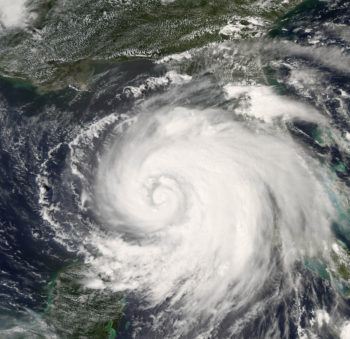2009 Hurricane Season

Hurricane forecasters are predicting a near-normal 2009 hurricane season which officially begins Monday (June 1), and from nine to 14 named storms are anticipated. But recent history shows that just one can be devastating and cripple a region, says John Nielsen-Gammon, a professor of atmospheric sciences at Texas A&M University who also serves as State Climatologist.
Forecasters last year also predicted a near-normal season, but for Texas, Hurricane Ike was anything but normal – it caused at least $20 billion in damage, shut down Houston for more than a week and did widespread destruction in the Galveston area, where parts of the city have still not recovered from its Sept. 13 landfall.
The only accurate prediction to be made, Nielsen-Gammon says, is that if a significant hurricane hits Texas, it’s always going to be bad news.
“Ike showed us that even a relatively small storm can cause severe damage,” he notes. “It was a Category 2 storm when it hit, but it had a Category 4 storm surge of up to 17 feet. Even if just one hurricane hits Texas, that can make it a very bad hurricane season.”
Ike’s powerful storm surge sent huge waves crashing into Galveston and the Bolivar Peninsula and created widespread power outages and a stoppage of city services that lasted weeks in some areas.
The overall trend, Nielsen-Gammon says, is that since 1995, the Atlantic has been in what forecasters call a “high-activity era.” That means, on the average, more storms than normal, and that was especially the case in 2005 when a record 28 named storms formed, with 15 of those becoming hurricanes. Two of them – Katrina and Rita – caused catastrophic damage along the southern Gulf Coast and more than 2,200 people were killed during the 2005 hurricane season.
Nielsen-Gammon says that storms that form in the Gulf of Mexico and then become hurricanes pose a particular threat.
“They tend to form quickly, sometimes amazingly fast,” he adds. “In 2007, Humberto formed in the Gulf and it went from a tropical depression to a hurricane in less than 24 hours.”
“Anywhere on the Texas coast is susceptible to a hurricane,” he adds. “Despite Ike, Houston has been especially lucky – it has not been hit directly by a Category 3 storm or higher even once in the past 65 years. If a Category 3 or 4 hurricane did hit Houston, the devastation would put Ike to shame.”
He says that Ike showed us “that perhaps the biggest problems associated with hurricanes is power, or lack of it. Once a hurricane hits, the electricity is almost certain to go out in many areas, and when that happens, there’s not much we can do about it. There is a very vulnerable aspect of the power grids in and around southeast Texas.”
Storms are assigned names once they reach wind speeds of 39 miles per hour or more and become hurricanes when winds exceed 74 mph. Major hurricanes are those that have winds in excess of 111 miles per hour.
The hurricane season runs through Nov. 30.
Media contact: Keith Randall, Texas A&M News & Information Services.





